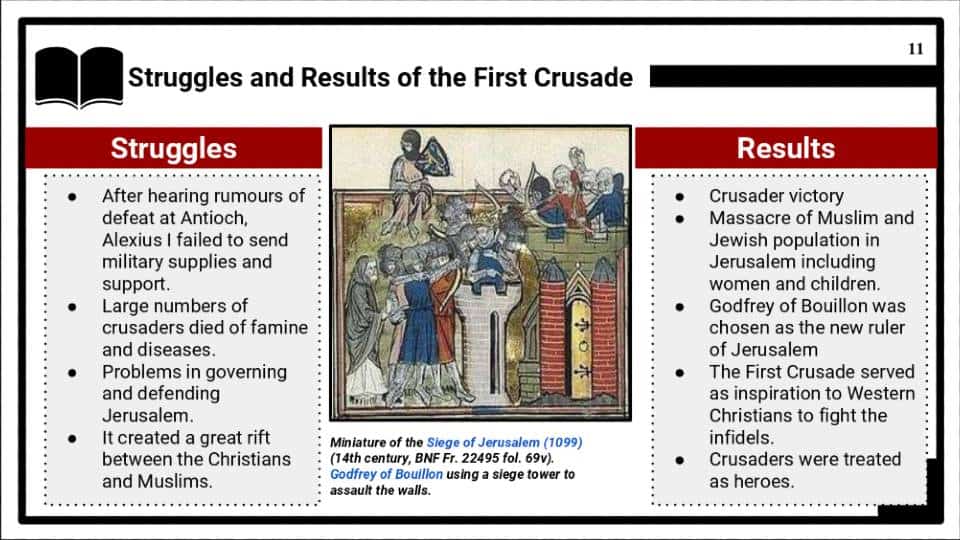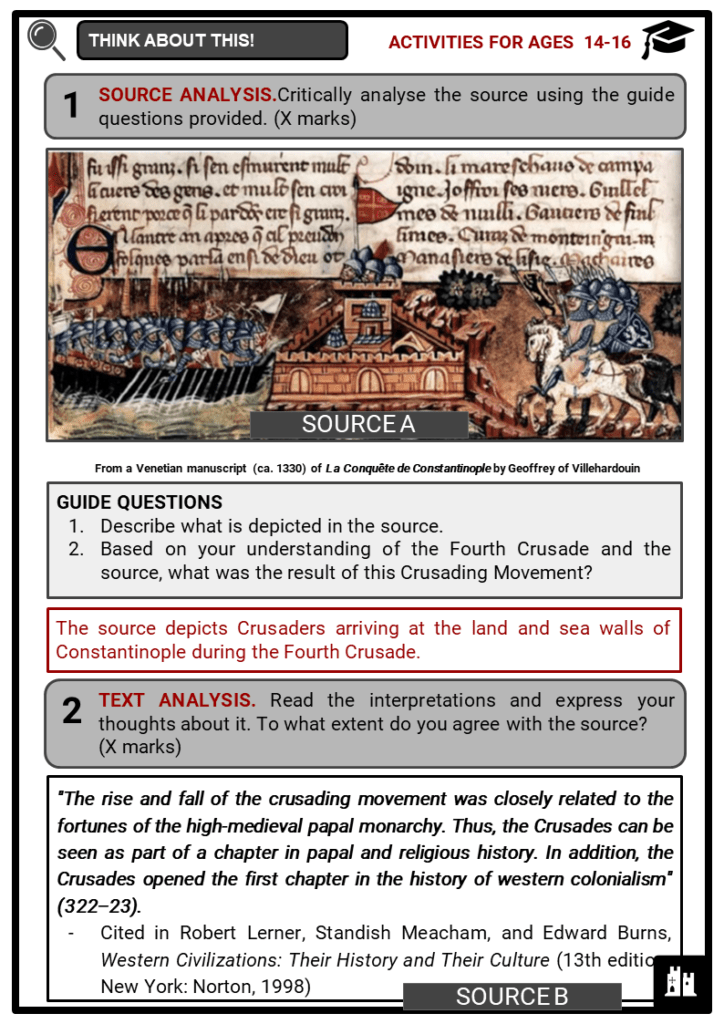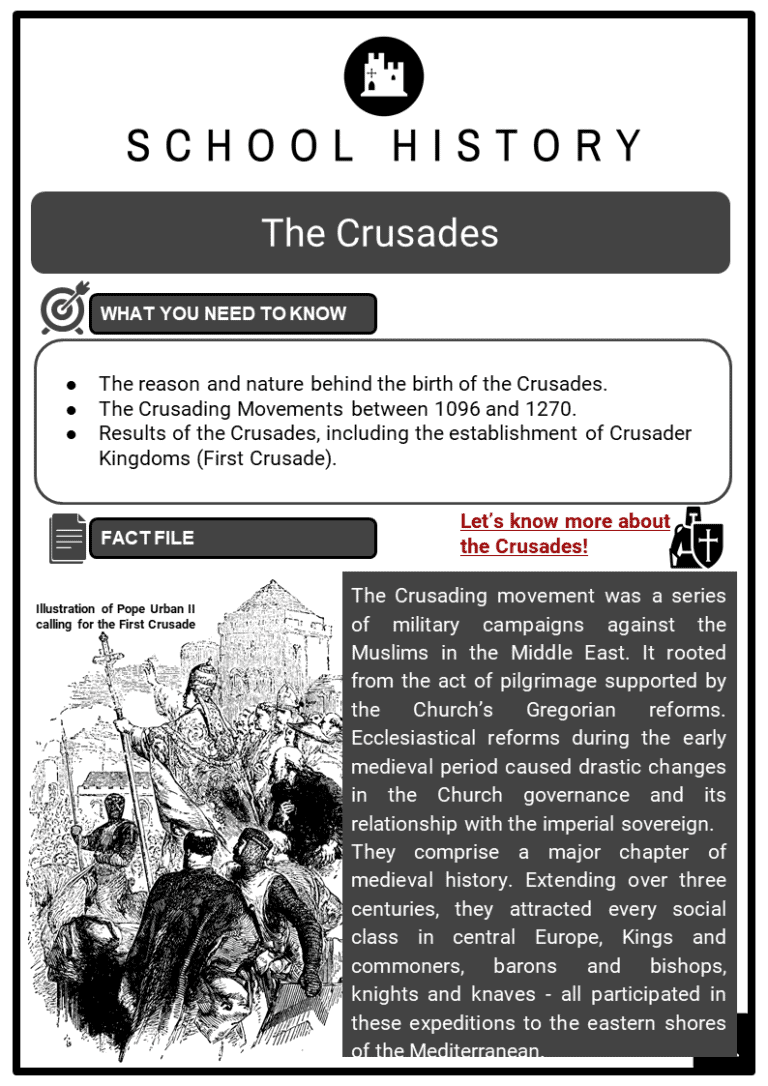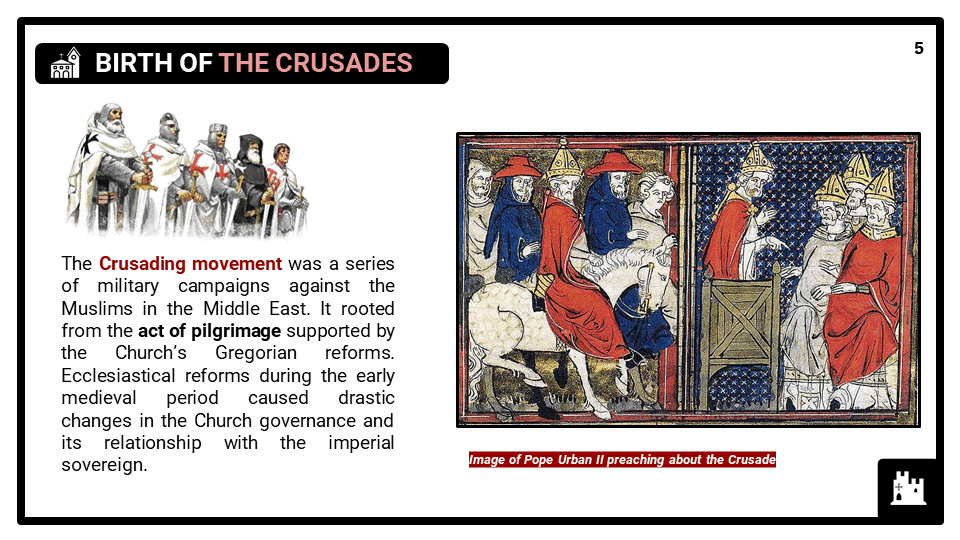
The Crusades Facts, Worksheets & Summary Of 1st, 2nd, 3rd, 4th & 5th
People who went on the Crusades were motivated by different reasons including the prospect of wealth, freedom or power. Key figures involved in the Crusades included Richard the Lionheart and.

The Crusades by Roy Parton
The Editors of Encyclopaedia Britannica The Crusades were organized by western European Christians after centuries of Muslim wars of expansion. Their primary objectives were to stop the expansion of Muslim states, to reclaim for Christianity the Holy Land in the Middle East, and to recapture territories that had formerly been Christian.
The Crusades Causes and Effects
The crusades caused a rupture in western-Byzantine relations. First, there was the Byzantine's horror at unruly groups of warriors causing havoc in their territory. Outbreaks of fighting between crusaders and Byzantine forces were common, and the mistrust and suspicion of their intentions grew. It was a troublesome relationship that only got.

The First Crusade OCR B GCSE History 91 Lesson Resources
The Crusades began with the First Crusade (1095-1099) that resulted in the formation of the Kingdom of Jerusalem.Crusades in the Holy Land (or Levant) continued until the siege of Acre in 1291, when the Western nations were expelled from the region. Crusades continued in the Mediterranean, including Cyprus and Rhodes, until 1578, primarily pitting the West against the Ottoman Empire.

Map Of The Four Crusades Stock Illustration Download Image Now Map, Byzantine, Islam iStock
The Crusades had numerous consequences and effects. Three were particularly important. First, the city-states of northern Italy, especially Venice, Genoa, and Pisa, grew rich transporting goods and crusaders back and forth between Europe and the Middle East. As the transporters, the merchants, and the bankers of crusading expeditions, it was.

The Crusades by Roy Parton
Below is the article summary. For the full article, see Crusades . Crusades, Military expeditions, beginning in the late 11th century, that were organized by Western Christians in response to centuries of Muslim wars of expansion.

Eduqas GCSE History 1E. The Crusades, c10951149 History Resources
Article by Mark Cartwright published on 04 July 2018 Listen to this article Available in other languages: Arabic, French, Greek, Portuguese, Spanish, Turkish The Crusades were a series of military campaigns organised by Christian powers in order to retake Jerusalem and the Holy Land back from Muslim control.

The Crusades by Roy Parton
Through the use of a broader range of evidence than ever before (especially charters, that is sales or loans of lands and/or rights), a stress on contemporary religious impulses as the dominant driver for, particularly the First Crusade, came through.

The First Victims of the First Crusade The New York Times
Crusade as metaphor One of the most enduring though least-discussed results of the Crusades was the development of the word crusade (which first appeared in its Latin form in the late 12th or early 13th century) to denote any common endeavour in a worthy cause.

The First Crusade Causes and Effects Video & Lesson Transcript
The Crusades. The Crusades were a series of religious wars initiated, supported, and sometimes directed by the Latin Church in the medieval period. The best known of these Crusades are those to the Holy Land in the period between 1095 and 1291 that were intended to recover Jerusalem and its surrounding area from Islamic rule.

Did the Crusades lead to Islamic State? The University of Sydney
Major Events: Albigensian Crusade Battle of Ḥaṭṭīn Siege of Edessa

The Crusades by 1351
Later Crusades Successive crusades were launched to the Holy Land. The knight Jean d'Alluye traveled to the Holy Land around 1240, but the circumstances of his voyage are not known . The Seventh and Eighth Crusades, in 1248 and 1270, were sponsored by Louis IX, who died in Tunisia (54.1.2; 37.173.3).

The Crusades Facts, Worksheets & Summary Of 1st, 2nd, 3rd, 4th & 5th
The Crusades were a series of invasions of the Middle East by Europeans in the name of Christianity. They went on, periodically, for centuries. They resulted in a shift in the identity of Latin Christianity, great financial benefits to certain parts of Europe, and many instances of horrific carnage. The Crusades serve as one of the iconic.

The Crusades Facts, Worksheets & Summary Of 1st, 2nd, 3rd, 4th & 5th
Territorial expansion Second, crusading played a major role in European territorial expansion. The First Crusade resulted in the formation of the crusader states in the Levant (the eastern Mediterranean), which were initially governed, and in small part populated, by settlers from Europe.

Christendom and the Crusades KS3 Teaching Resources History Resources
Muslim forces ultimately expelled the European Christians who invaded the eastern Mediterranean repeatedly in the 12th and 13th centuries—and thwarted their effort to regain control of sacred Holy.

Crusades Definition, History, Map, Significance, & Legacy Britannica
Holy Land . His lord is persuaded, and gathers his men and resources. The man-at-arms says goodbye to his family, and departs in 1096 on years of painful journeying and military campaigns. He dies of starvation at Antioch, never seeing Jerusalem. His family never knows his fate. This was crusading.